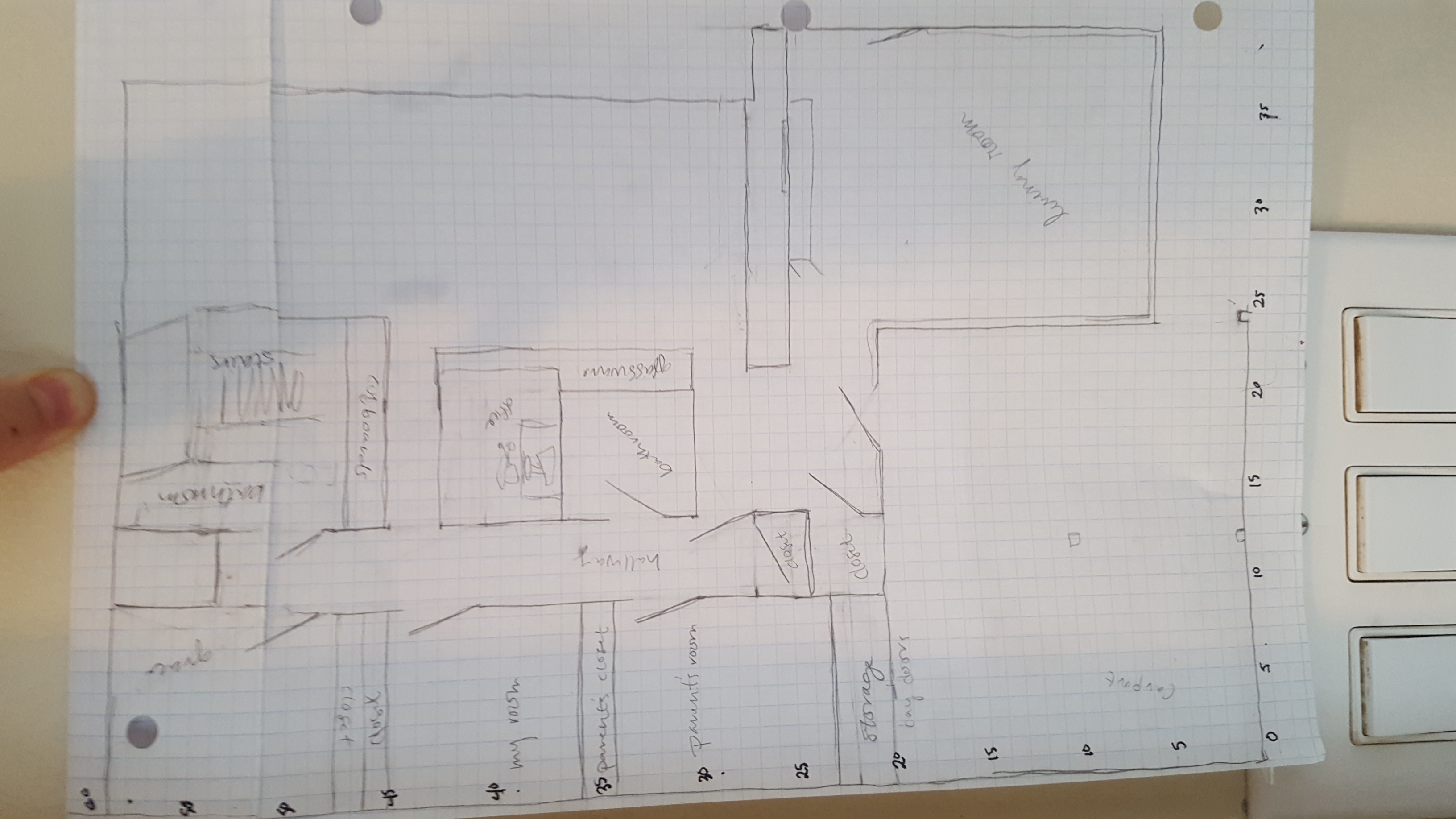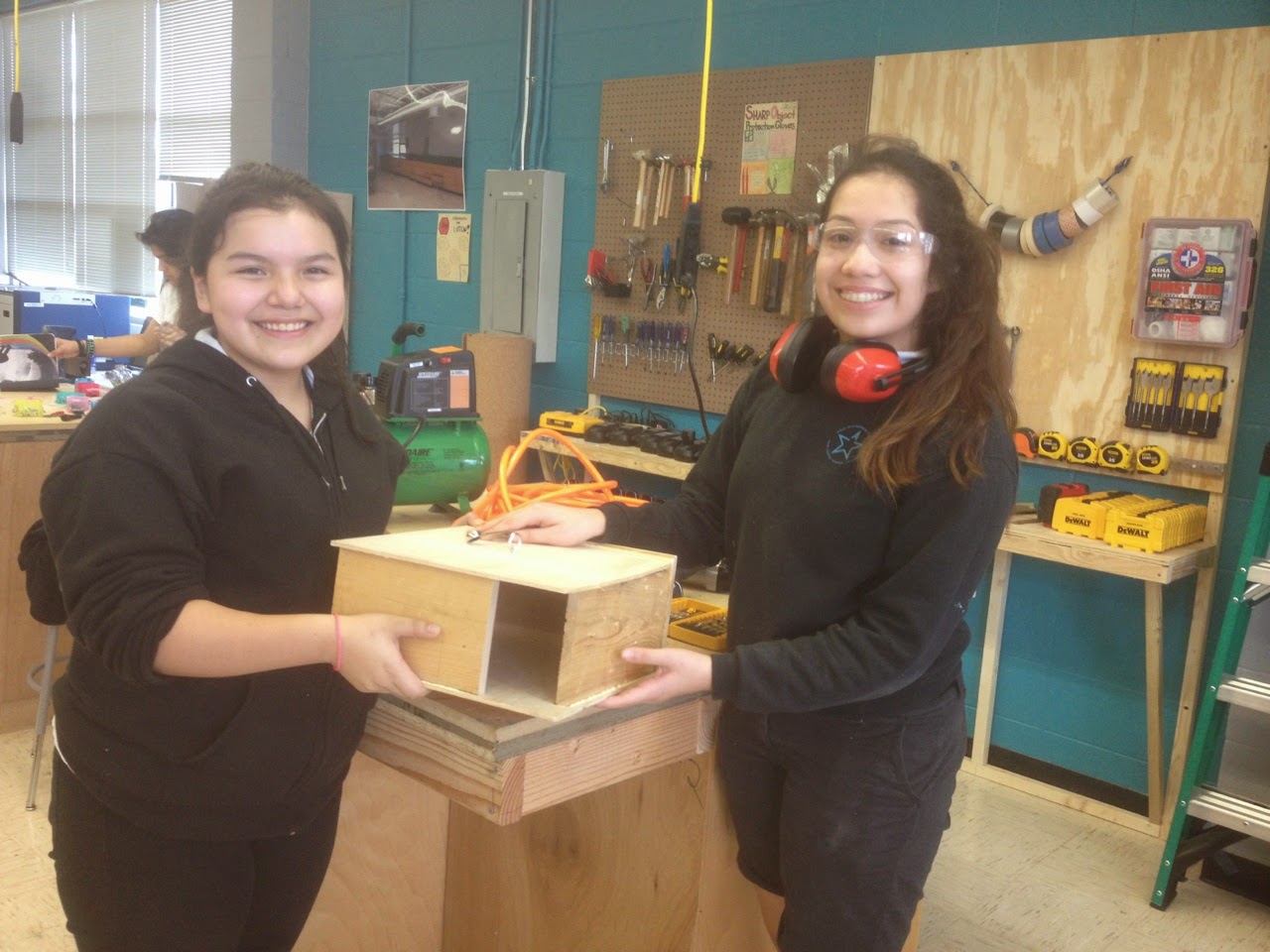Sustainability Improvement Plan for my 1950s House: Hicks-Green ’17 at Childhood Home
Dec 08, 2016Hi all! I am currently writing you from my parent’s house in Olympia, Washington, believe it or not, this is the site of my summer co-op. My parent’s purchased this 3,200 sq ft. mid-century modern, palm springs style home 10 years ago, right after the housing market bubble, back when solar was burgeoning as a sensible option for homeowners, and urban, at home gardens were taking off as a trend.
While principals of sustainability were making their way from niche groups into mainstream society, my house remained a gigantic resource drain. Part of what had attracted us to our home, aside from the glorious floor to ceiling windows, and slanted roofing, was the crystal clear pool in the back yard. For years my sister and I had to ward off the slew of faux friends who would invite themselves over to use our pool, we were the place to be over the summer—something that we both enjoyed and resented even then.
Over the years though, the energy inefficient allure of our 1950s home had worn off on my family and I. We were tired of our giant windows showcasing month long periods of gloomy, drizzling skies, and the work involved in maintaining the pool all year round for the 2 and a half months of use we got out of it could no longer justify itself. In 2010, fed up with the constant maintenance of the house and oppressive rainy weather, my family left the house in Olympia with plans of selling it soon in exchange for sunnier skies in Austin, Texas.
Our first renters told us of their plans to buy the house, and we wrote up a contract for that to happen, but that didn’t ever come to fruition despite them attempting to remodel our basement. Upon hearing that our family room/basement had been stripped down to the foundation in order to create an in-house operation, the first renters were kicked out and the house was rented out to new people. While the house we still owned in Olympia was being rented out to random people here, my family was moving around from rental to rental in Austin. Without having found a place to settle, and with both my sister and I off to college, my parents decided to move back into the house we bought in 2006. We just moved in 4 weeks ago.
As anyone who has left their house in the hands of strangers for extended periods of time without checking in on their property or their renters would have experienced, the house came back to us in pretty rough shape. A lot of the work my family had done to get the place fit to sell had not aged well, and what was once the finished basement is now unfinished and likely has a lot of coding violations. On top of all that, our beloved pool had sprung a leak, destroying it’s $10,000 liner and securing it’s fate to be filled in. Our deck, with it’s rotted out boards has to be dismantled as well, to allow for bulldozers and cement diggers to get through to the backyard. As was to be expected, the landscaping was neglected during its 10 years of renting so we have to start fresh there too. I had always wanted to use the space we had available for growing food, so I proposed this to my parents and we took off running from there.
Since my initial offer to clean up the side yard and eventually cultivate it into a food garden once I move back in, my parents and I have extended the plan to include current and future renovations needed to be made on the house. From my education at Antioch in subjects like Botany, Aquatic Biology, and Ecology, and from the experience I gained over my last co-op at the Solar Living Institute in California where I worked as an intern and took a week long intensive course on Photovoltaics, I’ve been able to suggest certain plants and water systems which can, in the spirit of biodynamics, serve multiple functions. For example, I have suggested to my parents, planting fruit orchard trees which do well in Western Washington (of which there are many) along the North Eastern gate of our garden, providing us with fruit, shade, and privacy from our neighbors. In lieu of our monstrous deck I have suggested building a grape trellis, which will give us grapes and shade all summer long, then in the winter, when the grape leaves fall away, sunlight will be able to get through our huge windows and provide us with passive solar heating. My solution for the giant cement hole in the ground that used to be our pool is to use the already present depth it’s given us to transform it into a rain-catchment pond (or maybe a duck pond if I can convince my parents!). Using a rain barrel and a short run for the water to cruise through and aerate, the water will be lead into the pond which will have a small, solar paneled DC pump at the bottom to pump through water through small hoses around the yard to use for irrigation.
While not all of my ideas have been yet approved to do by my parents, and most of them will take years to institute correctly, my general push to make the house more sustainable has been met with excitement and vigor on my parents end, and work and curiosity on mine, and with all the projects I’m planning, I will certainly be kept busy for years to come after I graduate Antioch with a Bachelor’s degree in Environmental Science.
For now, here are the things I have worked on/completed as of August 8, 2016.
- Scraping the fascia boards for rot
- Lifting up the pool cover
- Moved and put away boxes
- Organized boxes in the basement

The floor plan I’ve made of the first floor of the house, more of these to come!

The deck that will eventually have to come down. Note the rotted floor boards.


After I picked the pool cover up, not yet finished but significantly better. Was the worst thing I’ve ever had to do. Horrible smells and grime. I wish I could say never again but I’ll be fixing it tomorrow.

Bags of brush I broke down by hand.

The side yard and the future site of my vegetable garden/orchard.

Paint scrapped off the fascia boards wherever there were bubbles due to wetness. Next I have to prime and paint these boards
Empowering Young Women Leaders: Eleanor Hicks-Green ’17 at Ann Richards School for Young Women Leaders in Austin, Texas
Feb 23, 2016Tucked away behind a Pluckers and an assortment of Austin landmarks-turned-condos, sits a nondescript cluster of brick buildings which Texans would recognize as a school, but whose importance might elude non-natives. A browning field of grass greets onlookers, a commonality among public schools in drought-stricken central Texas. Girls in white, black and navy uniforms navigate among tan buildings using graveled pathways. The school hums with the bustle of young achievers at work. Founded in 2007 and named for a beloved former governor, Ann Richards serves a variety of young women (grades 6-12) from all over the city. Application to the school is a competitive process and requires that girls have met all state testing standards, attend school consistently, and have good grades. Still, 75% of students come from economically disadvantaged households, and students of color are the majority–a rarity among selective schools in Texas. From the time of their admission, students are familiarized with science, technology, engineering, arts, and math(STEAM). By the time they reach 8th grade, the girls have explored multiple fields including robotics, programming and green architecture. Their multi-faceted skill-set equips the young women with unique problem-solving abilities that extend beyond the classroom. “Making” is taught with extra emphasis here, and the teachers do so creatively. The modules set in place require the girls to develop ideas, create plans and execute projects using various computer programs, 3D and laser printing, and a large selection of tools.
I intermingle with the different groups, never working with one for more than 15 minutes, aiding them in any way I can. As I bounce around the classroom and workshop, I inquire about the various projects each group will be undertaking. I help unravel problems by loosening certain threads and offering new perspectives. I experiment with the materials alongside the girls, so we find ourselves exploring and testing our new skills in unison. This helps me strike a balance, enabling me to generate ideas and suggestions without dominating. I have built up trust with many of the students, which allows a more free-form flow of communication. We giggle and goof-off between bouts of intense thinking, analyzing, and processing in which all ideas are respected. I implore them to draw, write and research their projects, as well as read the directions, a task too often overlooked by the students, who are eager to finish.
As with any maker, especially students, frustration is common. Usually frustration can be eased through a series of pointed questions or a dialogue, though occasionally it can only be met by my backing off and allowing space for the girls to decompress and think on their own. Every week I find myself more at ease with my decisions. Initially on edge about everything, from which group I should help to how to help them, I have now developed a groove to help me navigate the ins and outs of assisting pre-teen girls with difficult tasks. I feel confident in my interactions and choices. I do my best to help–and often that’s just by being humble and willing to learn together.
Still, I do only a fraction of everyone else. Katherine Sauter, the skilled and brilliant woman who teaches the class, works around the clock, developing modules, grading and instructing the girls. Oren, who supervises the workshop, consistently stays longer than he has to so that he can provide more examples and directions for the girls being introduced to the large tools and equipment available. However, these dedicated individuals are stretched so thin that my assistance really does seem to make a difference. I’m available when Ms. Sauter and Oren are not. Although I cannot answer questions to the same ability, my approachability and earnest desire to help–as well as to have fun–finds me being sought out for assistance quite often. Remarkably, many of these young women look up to me. My age and honest communication with them have put me in the position of a role model, so I try my best to live up to that. I use the skills I have gleaned from my education to translate complicated subjects into something more approachable. I fall back on memories from some of my more difficult classes, like Chemistry and Genetics, and trying to decode that challenging subject matter. When I do convey the information in a way that clicks, it’s a rewarding feeling for all involved, and we all get to come away with something special.



